RIT Imaging Science Seminar Series
- RIT/
- College of Science/
- Academics/
- Schools and Centers/
- Chester F. Carlson Center for Imaging Science/
- Resources/
- RIT Imaging Science Seminar Series
The RIT Center for Imaging Science Seminar Series presents a wide range of speakers across diverse fields including, but not limited to, AI, remote sensing, AR/VR, machine learning, and environmental imaging.
Join us for our upcoming seminar!
Enhance your understanding and connect with industry leaders at our seminar series designed specifically for students. Join us for inspiring talks featuring a diverse lineup of speakers!
Upcoming CIS Seminar
Wednesday March 19, 2025
3:00 - 4:00 PM
Carlson Auditorium (CAR-1125)
The Role of Satellite Imaging Technology in Climate Change Mitigation and Emergency Management
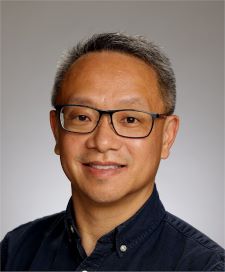
Eric Choi
Director of Business Development at GHGSat
Satellite imaging technology is addressing the growing need for global transparency in greenhouse gas emissions. Several past (e.g. SCIAMACHY) and current (e.g. Sentinel-5P/TROPOMI) space agency missions provide greenhouse gas data on regional and global scales. An exciting development is the operational availability of commercial remote sensing companies like GHGSat that are pushing the boundaries with innovative and complementary Earth observation imaging capabilities that would otherwise not be possible with either a space agency or private sector mission alone. GHGSat’s satellites enable the quantification of facility-level greenhouse gas emissions for stakeholders in the energy, resource, power generation, agricultural, waste management, and sustainability sectors to make informed environmental decisions. This presentation will include an introduction to the career of the speaker, an overview of the science and engineering of satellite-based methane detection and quantification, a summary of GHGSat’s satellites and their capabilities, a description of how GHGSat works synergistically with space agency missions, and conclude with examples of the relevance of GHGSat observations to emergency management such as the Nord Stream pipeline incident of September 2022 and the Türkiye earthquake of February 2023.
https://rit.zoom.us/meeting/register/wf3B_pNPQxiAKojl5rA7NQ
To request interpreting services, visit www.myAccess.rit.edu
Seminars for Fall 2024
January 29, 2025:
Imaging the Unseen:
Unraveling Jets and Accretion Flows in Supermassive Black Hole Binary Mergers with Advanced Simulations
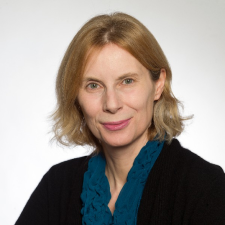
Manuela Campanelli, Ph.D.
Distinguished Professor of Astrophysics
John Vouros Endowed Professor
Director — RIT’s Center for Computational Relativity & Gravitation
January 29, 2025:
Old (Astronomical) Favorites Seen in New Light: Multiwavelength, Multidimensional Imaging of Planetary Nebulae
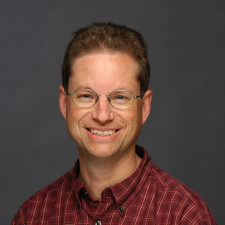
Joel Kastner Ph.D.
Professor
Center for Imaging Science
School of Physics & Astronomy
Rochester Institute of Technology
Founding Director of RIT's Laboratory for Multiwavelength Astrophysics
February 5, 2025:
Colorizing Synthetic Aperture Radar Images
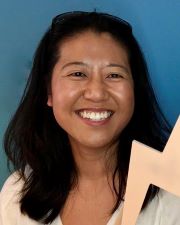
Sanghui Han, Ph.D.
Imaging Scientist
CFD Research
February 12, 2025:
Quantum and Wave Phenomena in Scanning Electron Microscopes
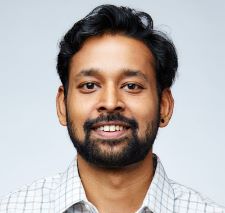
Surya Kamal, Ph.D.
Research/Engineer I
Center for Imaging Science
Rochester Institute of Technology
February 19, 2025:
Generative AI, Agents, Superintelligence
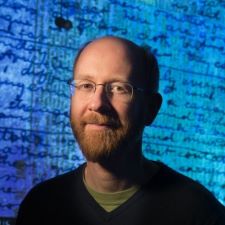
Adrian Wisnicki, Ph.D.
Professor
University of Nebraska-Lincoln
February 26, 2025:
Satellite Remote Sensing for National Security

S. Didi Kuo, Ph.D.
Member of the Defense Intelligence Senior Executive Service
Principal Deputy Director
Geospatial Intelligence Systems Acquisition
Directorate for the National Reconnaissance Office
March 19, 2025:
The Role of Satellite Imaging Technology in Climate Change Mitigation and Emergency Management
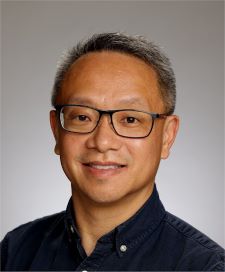
Eric Choi
Director of Business Development at GHGSat
March 26, 2025:
Designing NASA’s next generation mission architecture for 3-D imaging of the Earth’s Surface, Topography and Vegetation (STV)

Mark Stephen, Ph.D.
NASA Goddard Space Flight Center
April 9, 2025:
From Lab to Livestock: Designing Optical Systems for the Farm
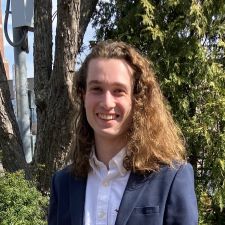
Zachary Sobel-Pressman
Optical Engineer
Labby
April 16, 2025: Les Johnson
April 23, 2025: Dr. Nidhal Bouaynaya
Past Seminar Speakers
Satellite Remote Sensing for National Security
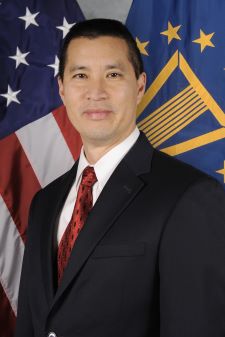
S. Didi Kuo, Ph.D.
Member of the Defense Intelligence Senior Executive Service
Principal Deputy Director
Geospatial Intelligence Systems Acquisition Directorate for the National Reconnaissance Office
No recording available
Generative AI, Agents, Superintelligence
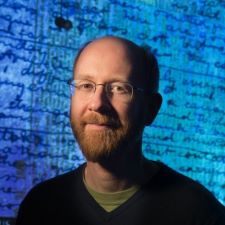
Adrian Wisnicki, Ph.D.
Professor
University of Nebraska-Lincoln
No recording available
Quantum and Wave Phenomena in Scanning Electron Microscopes
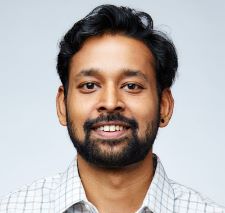
Surya Kamal, Ph.D.
Research Staff/Engineer I
Center for Imaging Science
Rochester Institute of Technology
Scanning Electron Microscopes (SEMs) are widely used imaging and characterization tools across various fields, including science, engineering, and medicine. Despite their broad application, SEMs remain insufficiently characterized and imperfectly understood. This talk will focus on general education of imaging using SEMs while highlighting recent advancements in the field of SEM optics. Specifically, the presentation will address two key aspects of improving SEM performance through the application of wave optics and quantum optics principles. By employing wave optical formulations, we can recover phase information, which is critical for sensing aberrations. Furthermore, by leveraging concepts of quantum optics, we will explore the potential for achieving sub-shot noise imaging in SEMs
Colorizing Synthetic Aperture Radar Images
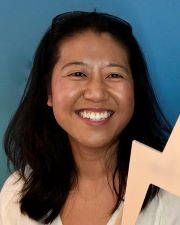
Sanghui Han Ph.D.
Principal Engineer/ Imaging Scientist
CFD Research Corporation
Most Synthetic Aperture Radar (SAR) images are represented in grayscale. They are created from the intensity of the received signals that are scattered reflections of the transmitted signal. However there are several ways to colorize SAR imagery to extract more information about a scene. By studying the phenomenology and representing them through color, we can better interpret the scene. However, unlike RGB images created from passive sensors, what the colors tell us are not always intuitive. This presentation will explore the interpretations of colors in SAR imagery from Colorized Sub-aperture Image (CSI) products and how they are created.
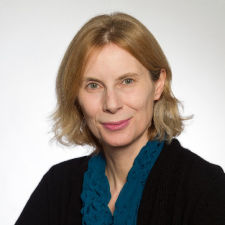
Manuela Campanelli, Ph.D.
Distinguished Professor of Astrophysics
John Vouros Endowed Professor
Director — RIT’s Center for Computational Relativity & Gravitation
Supermassive black hole mergers represent a spectacular cosmic event with immense energy implications, emitting gravitational waves equivalent to the total light output of stars in the entire Universe within a brief timespan. These mergers play a crucial role in shaping the overall mass distribution of supermassive black holes across the cosmos. However, capturing visual evidence of these mergers remains elusive due to uncertainties surrounding the type of light emissions accompanying gravitational waves during these events. To address this challenge, novel General Relativistic Magnetohydrodynamics (GRMHD) simulations are being conducted to gain detailed insights into the astrophysical environments surrounding supermassive black hole binaries as they progress towards merger. By employing sophisticated computational techniques capable of accurately capturing the intricate dynamics of accretion within circumbinary disks and the relativistic flow of magnetized matter around each black hole, these simulations reveal the behavior of gas flows near binary systems, particularly when both black holes exhibit spin. These simulated scenarios provide critical data for predicting the electromagnetic and gravitational wave signatures produced by supermassive binary black holes, guiding future observational strategies utilizing advanced missions like LISA and other upcoming astronomical facilities. Ongoing initiatives are focused on refining computational tools to deepen our understanding of supermassive black hole behavior within binary systems and its interactions.
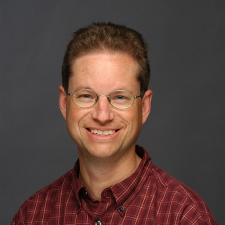
Joel Kastner Ph.D.
Professor
Center for Imaging Science & School of Physics & Astronomy
Rochester Institute of Technology
Founding Director of RIT's Laboratory for Multiwavelength Astrophysics
Planetary nebulae are highly photogenic astronomical objects that inform us about the near-final stages in the lives of stars with initial masses anywhere between roughly one to eight times that of the Sun. Because planetary nebulae are formed from the mass ejected from such stars as they die, these nebulae reveal how elements essential to life, like carbon and nitrogen, make their way from their natal stellar furnaces to planets like our Earth. However, lovely as they are, the myriad shapes of planetary nebulae present a puzzle to astronomers, complicating efforts to understand the underlying physical processes responsible for their formation. I will present an overview of our programs of imaging of planetary nebulae that exploit astronomical observing facilities spanning the spectrum of electromagnetic radiation from the X-ray through radio regimes, encompassing data from NASA’s Chandra X-ray Observatory, Hubble Space Telescope, and James Webb Space Telescope as well as the world’s most powerful mm-wave interferometers. I will describe how we combine these observations to try to gain new insight into the formation, evolution, and compositions of planetary nebulae.
High-definition, non-invasive 3D imaging with OCX
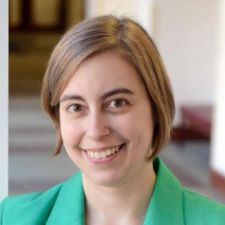
Cristina Canavesi
Co-Founder and President of LighTopTech Corp.
Rochester, NY
Optical technologies, with the capability to non-invasively image cellular structures in real-time, have the potential to revolutionize medicine. OCX is a novel dual-modality imaging system that combines optical coherence tomography (OCT) and Optical Coherence Microscopy (OCM) to simultaneously visualize tissue morphology in three dimensions and resolve cellular features over a 10 x 10 mm2 region. The OCT modality is first used to survey the sample and identify the region of interest, followed by high-definition imaging with OCM. OCX enables optical biopsy capabilities in a compact format. The structural OCX imaging capability has been enhanced by adding functional modalities and by incorporating machine learning techniques. In particular, convolutional neural networks were applied to automatically segment the endothelial cells in human cornea for quantitative, unbiased assessment of corneal health. A novel algorithm for optical coherence tomography angiography (OCTA), an attractive diagnostic tool for non-invasive, label-free vascular imaging in vivo, was demonstrated in conjunction with OCX to extract high-resolution cutaneous vasculature, significantly improving the visualization and characterization of micro-capillaries in vivo.
Unpuzzling an Anonymous Portuguese Nautical Chart of Africa of c. 1520 using Multispectral Imaging
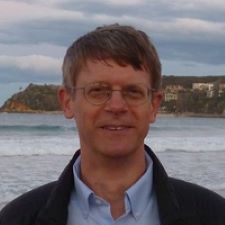
Chet Van Duzer
Historian of Cartography
Lazarus Project Board Member
University of Rochester
The Portuguese quest to sail down the western coast of Africa to reach the Indian Ocean, and thus the riches of India, was one of the great maritime enterprises of the late fifteenth century. An unstudied Portuguese map of West Africa in the Krauss Collection at the Harry Ransom Center, University of Texas at Austin, which has been dated c. 1520, offers an opportunity to study the evolution of Portuguese knowledge of that coast in the following decades, but many of the place names on the map have faded to illegibility. In this talk I will take a fresh look at the map using multispectral imaging to see what its damaged place names can tell us, and in particular what we can determine about the purpose of the chart.
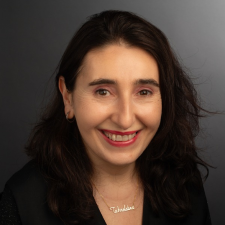
Dr. Eva Navarro López
Professor in Computing and AI at the School of Interactive Games and Media
Former Director of the iSchool
Rochester Institute of Technology
Beauty is the most prominent characteristic of complex dynamical systems, which exhibit emergent and collective behaviors. This beauty manifests in various forms as we model and analyze the evolution of these systems over time and their multiple interactions with their environment and their own components – each of which can be also viewed as a complex dynamical system. The beauty lies not only in their evolution over time but also in their unpredictability and adaptability to intrinsic discontinuities. To understand complex dynamical systems, we must move beyond ‘only discrete’ models, conventional statistical paradigms and data-driven techniques, which stem from the orthodoxy of computational theory, models and machine learning. In this talk, I will provide an overview of key findings from my work on the modelling, analysis, and control of complex dynamical systems. I will trace the natural evolution of my research, transitioning from control systems to self-organizing adaptive networks of networks like the human brain, under the umbrella of nature-inspired machine intelligence and artificial intelligence. Along this journey, I will explore the pivotal area of hybrid dynamical systems and cyber-physical systems, including formal specifications of dynamical properties, symbolic artificial intelligence and automated verification methods –all guided by the beauty and elegance of their mathematical foundations. The working of the human brain, self-organization in nature and Alan Turing’s morphogenesis –having collaborated with Alan Turing’s last student– are my paradigms.
Mission Design of a Global Environmental Intelligence Satellite Observation Network
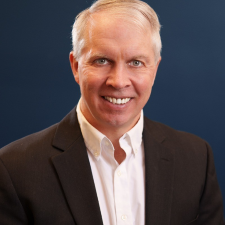
John Fisher
President and Founder
Brandywine Photonics
Our SBIR/STTR proposals are focused primarily on Space Development Agency and our recent Army Hyperspectral Processor Phase II award: • Medusa FPA radiation testing and performance characterization of next generation Digital Pixel FPAs. • Delphi Virtual Infrared Test Range - hybrid digital/optical simulation and algorithm validation using Infrared LED scene projectors. • Cyclops - large aperture scanning systems • SE-250 Space Processor using rad tolerant RISC V CPU and FPGA System on Chips: Missile Warning/Tracking Algorithms; ISR algorithms; On-board processing of near real time weather data products for the DoD; Remote Sensing Data Security at the data source: Digital watermarking, Zero Trust methodologies, and Post-Quantum Computing proof security • AE-250 Modular Sensor Interface and Processing Platform: AI/ML Algorithms for Hyperspectral Longwave Infrared processing on GPU/FPGAs for Army UAS: Application of the AE-250 to scientific & machine vision AI/ML applications
Additive Manufacturing Advancing and Being Advanced by Imaging Systems
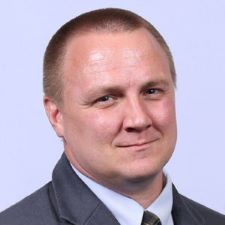
Edward Kinzel, Ph.D
Aerospace and Mechanical Engineeringe
University of Notre Damen
Additive manufacturing provides the potential to create parts with complicated geometries over low production volumes as well as opening new possibilities for diverse applications ranging from optics/photonics to structural elements. This talk will discuss two projects; the use of Digital Glass Forming (DGF) for creating imaging elements and the use of imaging techniques for Laser Powder Bed Fusion (LPBF) and DGF. DGF describes the CO2 laser-heated, filament-fed process, which can be used to locally melt continuously fed, small-diameter glass rods or optical fiber. 3D shapes are constructed by moving a 4-axis CNC stage relative to the intersection of the filament and laser beam. The heated glass is controllably deformed by loading from the workpiece and filament. One of the applications we are working on is using this technique to create refractive optics. This requires precision figuring of the printed glass as well as managing the index of refraction homogeneity. LPBF is much better established. In this process, a laser is scanned over a powder bed, locally melting the powder, to build up a part layer by layer. We are working to incorporate optical techniques to provide in-situ diagnostics of the process, including long-wave infrared imaging of the build plate, as well as short-wave infrared and visible imaging of the melt pool. These techniques provide important information about the process, generate voxelized predictions for part quality, and provide the potential for improved control
Bringing Our History to Light – X-ray Imaging of Ancient Materials from Archimedes to Gutenberg
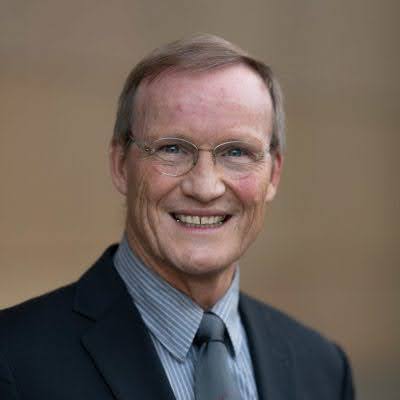
Uwe Bergmann, Ph.D
Martin L. Perl Professor in Ultrafast X-ray Science
Department of Physics
University of Wisconsin-Madison
The 10th century parchment document known as the Archimedes Palimpsest, contains the oldest surviving copy of works by the Greek genius Archimedes of Syracuse (287 – 212 BC). To uncover his obscured writings, 20 years ago we developed the synchrotron-based technique of rapid-scan X-ray fluorescence (XRF) imaging at the Stanford Synchrotron Radiation Lightsource. Since its successful application in the Archimedes imaging project, we further optimized the method, enabling us to carry out numerous XRF imaging studies of large objects of cultural, archaeological, and paleontological importance. We will describe the X-ray sources and imaging methods and present several examples of our quest to bring to light our cultural and natural heritage with X-rays. We will conclude the lecture with our recent work on disentangling the carbon chemistry of Australian plant exudates from a unique historical collection. These extraordinary plant materials have been used for millennia for various applications and are still employed in contemporary art. To probe deep into the bulk of these materials, we employed a powerful hard X-ray technique that overcomes some of the limitations of conventional carbon X-ray spectroscopy. Please join me in a fascinating journey through our ancient history and see how powerful modern X-ray imaging methods help us to uncover it.
Computational Framework for the Elastography Inverse Problem
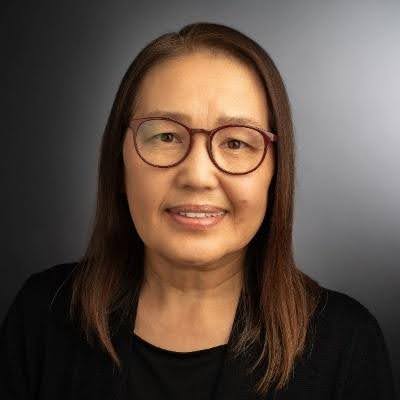
Basca Jadamba
Professor in the School of Mathematics and Statistics
Associate Head, Applied and Computational Mathematics
Rochester Institute of Technology
Early detection and treatments are key components in improvements in patient survival rates in cases of soft tissue cancers such as breast cancer. In this talk, we will introduce a computational framework for a parameter identification problem involving a system of partial differential equations (PDEs) describing displacements in soft tissues under applied forces where tissue displacements are obtained from imaging systems such as ultrasound. The focus of the work is the recovery of a spatially varying parameter in the model where the underlying mathematical problem is an optimization problem where the system of PDEs serves as a constraint. We introduce an adaptive mesh refinement framework based on finite element methods where the main goal is improved computational efficiency while still providing the resolution needed for accurate recovery of the parameter.
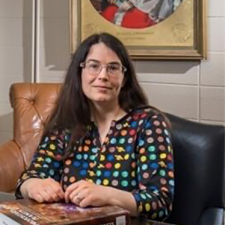
Sarah Dodson-Robinson
Professor of Physics and Astronomy
University of Delaware
With the advent of a new generation of high-performance astronomical spectrographs, the discovery of “Earth 2.0” is within reach. Yet Doppler searches for earthlike, habitable planets are plagued by parasitic signals from gas motion in stellar atmospheres and false positives produced by observing cadence and data analysis methods. Almost all Doppler planet-search teams use some variant of the periodogram to identify velocity signals caused by planets. Unfortunately, the Lomb-Scargle periodogram for unevenly spaced time series suffers from bias-causing spectral leakage and does not become less noisy as the number of observations increases. I will describe how adapting the Thomson multitaper technique to unevenly sampled, gapped astronomical time series can improve our prospects for planet detection. I will then show how magnitude-squared coherence and phase estimates allow us to diagnose the insidious false positives that come from stellar rotation and magnetism. Finally, I will illustrate two interesting astronomical imaging methods that are useful for exoplanet science - bolometry and angular differential imaging - and discuss the possible use of 2-d Slepian tapers in Fourier analysis of images.
Spectral Imaging for Heritage Science: Workflows for Image Processing and Analysis
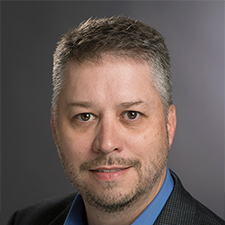
David Messinger, Professor
Chester F. Carlson Center for Imaging Science
Rochester Institute of Technology
While on sabbatical at the University of Durham, UK, I worked with “Team Pigment,” a multidisciplinary collaboration between the departments of Chemistry, History, and the Institute of Medieval and Early Modern Studies (IMEMS), to build image capture, calibration, and processing workflows for multispectral and hyperspectral imaging of historical artifacts. Our camera systems include spectrally filtered multispectral imagers that are portable for use in a wide range of institutions, as well as Vis-NIR-SWIR hyperspectral imaging systems for use in the Palace Green Library at Durham. While there, we imaged over 100 artifacts, ranging from medieval manuscripts, Shakespeare’s First Folio, Persian art works, and an obscure medieval book binding, all with the goal of learning more about the content, and context, of these artifacts. The workflows will be introduced and examples of tasks such as pigment mapping, ink mapping, faded text enhancement, and underdrawing identification will be shown. Ongoing projects will also be presented.
The World Where Every Photon Counts
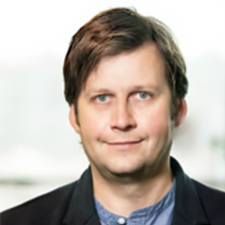
Speaker: Sergey Polyakov
Physicist
Quantum Measurement Division, Physics Measurement Laboratory
National Institute of Standards and Technology
Photon counting opens a door into a new world. Quantum effects emerge. Beyond fundamental interest, those effects lead to unprecedented accuracy of measuring light, often surpassing capabilities of classical sensors. Quantum-enabled photonic techniques can enhance nearly every traditional application in optics: from astronomy to biology and from communications to imaging. I will talk about our recent experiments with faint light that enable practical quantum advantage by demonstrating below-the-shot-noise sensitivity and super-resolution. Let me show you a new world that connects fundamental laws of nature with everyday optical technologies.
What’s Hot with Diffractive Solar Sails
Speaker: Grover Swartzlander
Professor
Chester F. Carlson Center for Imaging Science
College of Science
A series of fortunate events: from firing lasers at small cartoon trees, to a virtual Harvard Forest
Seminar Date: 01/17/24
Speaker: Jan van Aardt
Director
Chester F. Carlson Center for Imaging Science
College of Science
View the seminar here (YouTube)
Examining Accuracy and Resolution Requirements for the future NASA SurfaceTopography and Vegetation Structure Observing System
Seminar Date: 01/24/24
Speaker: Dr. Craig Glennie
Lidar for Detection of Mayan Civilizations
University of Houston
Unveiling the Mystique of Bayesian Thinking: A Hands on Dive with R and Python
Seminar Date: 01/31/24
Speaker: Ernest Fokoué
Professor
School of Mathematics and Statistics
College of Science
View the seminar here (YouTube)
Digital Camera Myths, Misstatements, and Misunderstandings
Seminar Date: 02/07/24
Speaker: Wayne Prentice
Owner
Prentice Imaging Consulting Service
View the seminar here (YouTube)
Advances in measuring, modeling, and understanding the consequences of climate change on snow hydrology
Seminar Date: 02/14/24
Speaker: Dr. Anne Nolin
University of Nevada
Perception of depth in real and virtual environments: The role of experience
02/21/24
Speaker: Dr. Laurie Wilcox
Centre for Vision Research
York University
Spatially-Selective Lenses
Seminar Date: 02/21/24
Speaker: Aswin Sankaranarayanan
Professor
Electrical and Computer Engineering
Carnegie Mellon
Using X-ray Photons to Study RNA editing in Trypanosomes and Tools to ease the use of PyMOL
Seminar Date: 03/06/24
Speaker: Dr. Blaine Mooers
Health Sciences Center
University of Oklahoma
Seeing in 3D – the journey of one startup
Seminar Date: 03/20/24
Speaker: Leslie Kimerling
Co-founder and CEO
Double Helix Optics
Ultrafast-Laser Photonics, Imaging, and Sensing
Seminar Date: 04/03/24
Speaker: Jie Qiao
Associate Professor
Chester F. Carlson Center for Imaging Science
College of Science
High-Quality Lensless Imaging: Experiments and Theoretical Foundations
Seminar Date: 04/10/24
Speaker: Leyla Kabuli
University of California
Communicating the Power of Earth Observation (EO) Technologies: A Picture is worth a Thousand Actions
Seminar Date: 04/17/24
Speaker: Ron Eguchi
CEO
ImageCat Inc.
Foundation Models and Their Potential Role in Future Cancer Care
Seminar Date: 04/24/24
Speaker: Ghulan Rasool
Assistant Member
Department of Machine Learning and Neuro-Oncology
Vision Science in Imaging Science: 1984-2024
Seminar Date: 8/30/23
Speaker: Jeff Pelz
Endowed Professorship in RIT's Center for Imaging Science
Chester F. Carlson Center for Imaging Science
College of Science
Understanding Learning from Streaming and Difficult Data: Why it's Essential in Imaging Science
Seminar Date: 9/06/23
Speaker: Bartek Krawczyk
Assistant Professor
Chester F. Carlson Center for Imaging Science
College of Science
Pushing the Edge of the Cosmic Frontier with JWST
Seminar Date: 9/20/23
Speaker: Jeyhan Karteltepe
Associate Professor
School of Physics and Astronomy
College of Science
Harnessing Remote Sensing and Imaging Spectroscopy for Scalable Solutions in Agricultural Disease Management: A Novel Framework for Risk Prediction
Seminar Date: 9/27/23
Speaker: Kaitlin Gold
Assistant Professor
Cornell University
Understanding the Robustness in Machine Learning and its Importance in Imaging Science
Seminar Date: 10/04/23
Speaker: Dimah Dera
Assistant Professor
Chester F. Carlson Center for Imaging Science
College of Science
Applications of Imaging Modalities in Engineering and Sciences: A Journey through Visible-range Color, Thermal, and Hyperspectral Imaging Projects
Seminar Date: 11/01/23
Speaker: Ruby Mehrubeoglu
Ph.D., Department of Engineering, Electrical Engineering, Mechanical Engineering and Engineering Technology Programs
University of Texas
Green Color Science
Seminar Date: 11/01/23
Speaker: Erik Reinhard
Ph.D., Distinguished Scientist at InterDigital, Inc.
Applications of Computer Generated Holograms for measuring optical surfaces and systems
Seminar Date: 11/29/23
Speaker: Dr. Jim Burge
University of Arizona
The current and evolving state of head-mounted eye tracking using frame and event-based sensors
Seminar Date: 12/06/23
View the seminar here (YouTube)
Speaker: Gabriel J. Diaz
Associate Professor
Chester F. Carlson Center for Imaging Science
College of Science




